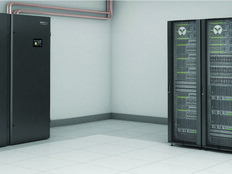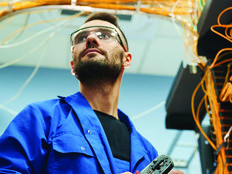Federal Agencies Get a Handle on Power and Cooling
The U.S. Department of Agriculture has taken aggressive steps to go green. One major focus has been making the Enterprise Data Center at its National Information Technology Center (NITC) more sustainable.
Edward Reyelts, acting associate CIO of data center operations within the Office of the CIO, says the USDA deployed chillers, in-row cooling, cold-aisle containment, uninterruptible power supplies and computer room air conditioning (CRAC) units with electronically commutated motor (ECM) fans. The combination of efficient environmental technologies has allowed NITC’s EDC to reduce its overall energy usage by 21 percent over the past three years.
“NITC has continued to pursue and implement green enterprise IT initiatives in support of our overall mission, and in taking greater environmental responsibility for data center efficiency,” says Reyelts. “Through the use of virtualization technologies and the implementation of more efficient power and cooling systems, NITC has been able to host more customers and provide more services within a smaller footprint, thereby reducing the overall environmental impact of the EDC.”
Reyelts adds that by taking these steps, NITC expects to see dramatic increases in the useful life of electrical and HVAC equipment, along with a reduced footprint that directly equates to increased system capacity, lower energy costs and a lower cost of ownership for taxpayers.
David Cappuccio, a managing vice president for Gartner and chief of research for the infrastructure teams, says the combination of power and cooling technologies USDA deployed should provide huge dividends, especially with in-row cooling. “Why cool the entire room when you can focus on cooling the equipment where the heat is coming from? We’ve seen organizations reduce their power and cooling costs by as much as 30 percent.”
Temperature Change
At the Engineer Research and Development Center (ERDC) in Vicksburg, Miss., managed by the Army Corps of Engineers, a chilled-water plant feeds cold water into the facility to keep the high-performance computing systems cool.
Steve Meadows, facility engineer for ERDC’s Information Technology Laboratory, says the agency uses a two-pronged approach to reduce energy consumption. First, because modern supercomputers can now handle more heat, ERDC increases the temperature of the chilled water from 42 to 50 degrees Fahrenheit, a move that saves energy in the processing of the water.
Second, ERDC uses high-efficiency chillers that reduce the amount of energy required to turn the shaft on the chiller. The result: a 36 percent drop in demand for electricity.
“Now, the combination of technologies is significantly more energy efficient for the DOD’s High-Performance Computing Center,” Meadows says of the DOD’s five supercomputing facilities.








